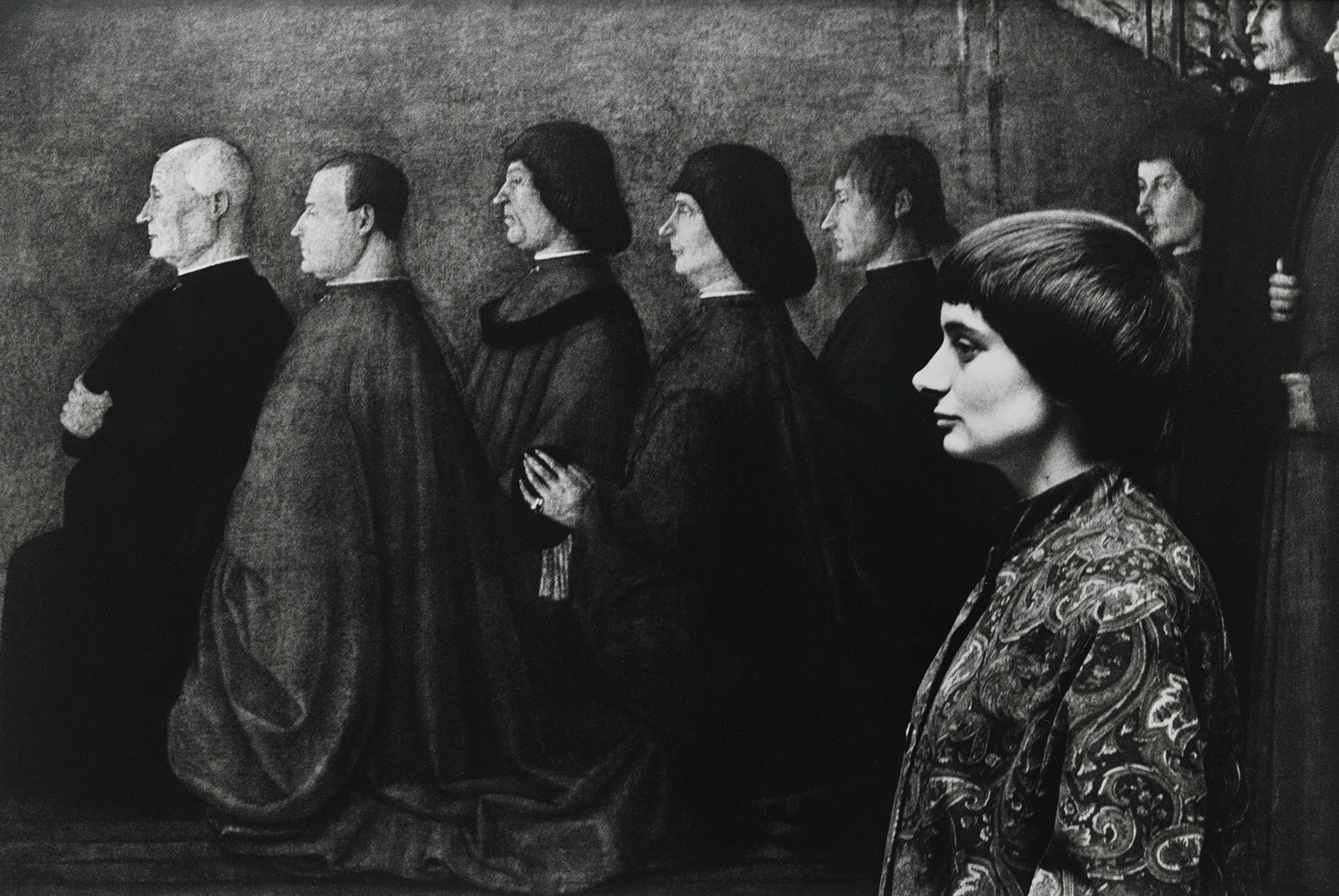A Curious Final Act for Agnes Varda, Queen of Auteur Cinema
A pioneer of French New Wave cinema, director Agnes Varda built an illustrious, decades-spanning career capturing the subtle ways everyday life can be messy, fulfilling, and ultimately beautiful.
The grandmother of French New Wave cinema discusses film, listening as empathy, and the joys of Instagram addiction
By Laura Feinstein
In The Gleaners and I, she travels the French countryside and through major cities documenting a series of gleaners as they seek out food, treasure in the trash, and sustaining personal connections. In another of her classics, Black Panthers, she turns her lens on an Oakland demonstration against the imprisonment of activist and Black Panthers co-founder Huey P. Newton. In these films, and the rest of her oeuvre, she channels an innate empathy, perceptivity, and artistic eye into timeless statements on humanity and social justice.
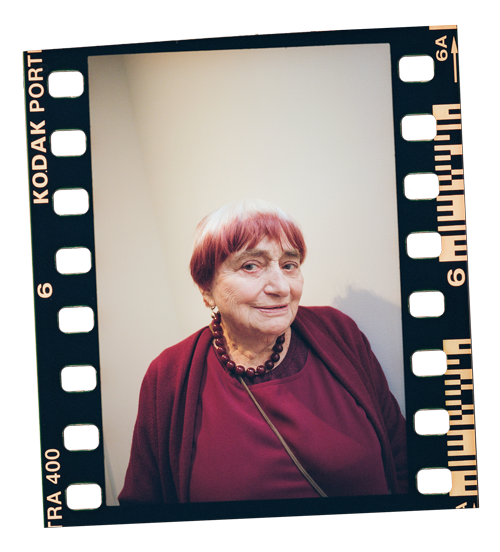
On an unseasonably warm, possibly climate-change influenced, Friday in February, Agnes Varda arrives at New York’s Blum & Poe gallery in a spritely mood, dressed head-to-toe in maroon, flanked by her assistant. The seminal French New Wave director’s iconic bowl cut has been dip-dyed a red-purple shade almost perfectly matching the scarf she playfully folds and unfolds around her shoulders. At 88, the godmother of contemporary cinema, a frequent collaborator with seminal filmmakers Chris Marker, Alain Resnais and Marguerite Duras, and originator of some of film’s most compelling, experimental docs, was planning to show us around her new series of installations. Unlike her work on Cléo from 5 to 7 and The Gleaners and I, today she’s walking us through a series of immersive physical worlds and video tableaus installed on the top floors of an Upper West Side prewar townhouse. In her first-ever NYC show, produced in conjunction with the film series “Agnès Varda: Life As Art” at New York’s French Institute Alliance Française (FIAF), it appears that the woman famous for inspiring thousands of DIY directors has shifted her lens to a new medium, visual art.
One of the first things you notice about Varda, other than her uncanny knack for monochromatic dressing, is her distinct scent, a strong musk of violet and woody notes, which only adds to the perception that this woman is of the natural world. A pioneer of the auteur theory of filmmaking, which emphasizes sense-of-place over dialogue, Varda is known for her preference for seaside life, as best captured in the 2008 film The Beaches of Agnès. It then makes sense that she would install not one but two separate immersive beach scenes in this 2-floor show, complete with imported sand and a cacophony of seagull calls.
“In my imagination, the sea invades everything,” she explained, with a touch of delight. “It’s between reality and imagination.”
“I live in Paris, but my mind is always near the sea,” she adds. “It’s my favorite landscape. I love the peace and just to hear the… [struggles to find word]…violence of the waves.”
Varda began her career as a visual artist, studying at the École des Beaux-Arts before going on to work at Théâtre National Populaire as a photographer. In this next phase of her life, she’s re-discovering collage, sculpture, and installation with a vengeance. In a particularly stunning piece, she reworks reams of super 8 film into tiny models of a shipwreck and greenhouse, playing literally and figuratively with the ideas of destruction, reuse, and renewal.

In the background of the sculpture room, she has attempted to transform some of her favorite photographs into short films, with a strong emphasis on the inner life of women. (In one case, she even re-imagines a fight between a husband and wife attempting to take a picture, the wife clearly the victor.)
Hailed as a feminist artist, she was one of the first directors to allow women on screen to exist wholly outside the spheres of male desire and domesticity. In her work, they are fully fleshed out in all their messy, human, and often mundane glory. The Lena Dunhams, and even the Jill Soloways, of the world owe Varda everything.
“Sometimes people say ‘you’re still a feminist!’ and I say, more than ever!” Varda jokes. “I fought a lot as a feminist because we succeeded with marches and writing and films, to change the law so people could decide if they want children or not.”
“Listening to people who otherwise no one would listen to is a step in the amending of the world,”
“It’s simple to say that birth control was an incredible step in society. But can you imagine all the centuries where women just had to accept that [it was unavailable]? My grandmother had 12 children! And still, there are people that are fighting against it.” She shakes her head.
This straightforward and unpretentious dissection of life and art is a huge part of Varda’s appeal, but the approach also extends to her process. Frequently casting unknowns—in one video installation the romantic lead is played by her plumber—the work exemplifies the many ways in which a small, quiet life can be beautiful.
“I’ve always loved working with natural people that I meet. I love the way they behave,” she told us. “I say [to new subjects] ‘I have a project, it’s an intimate scene, can you share the desire of that scene with me? These are not extras. They accept to be in a scene.”
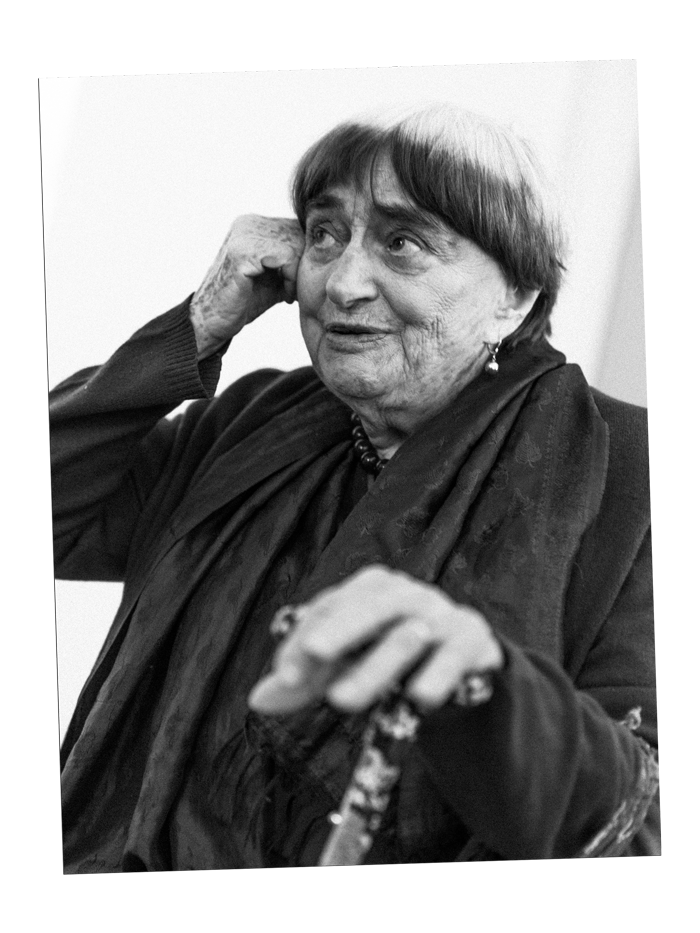
Behind this artistic decision is a desire to connect both the viewers and herself to the work. “I ask people to participate in my work because if you close the light and leave [a room], the image is nothing. If no one looks at an image, it’s just a dead piece of paper.”
And it’s this interplay between image and viewer that excites Varda about social media, which she uses surprisingly frequently. “People are taking photos all the time now, on their [she creates a phone motion]. Most what they are doing is selfie—they want to prove to themselves they were there,” she noted. “It’s interesting because it’s the same as saying ‘I am proving my life’ like…oh I’ve been traveling, or oh I met this person I’ve been…and ‘oh can I take a picture with you!’”
“In another time, when I was young, people would bring a child to the photographer,” she stated. “He would take a teddy bear with him and go in the studio. It was an act that would last for their whole life. They would have the photo. Now, it’s very democratic in a way.”
“We all want to have memories of ourselves,” she pauses. “And a lot of people, on Instagram, they put a lot of private images online. They put a lot of beautiful images up. I look at a lot of Instagram. It’s interesting. In a way, people’s lives become transparent. It’s almost like you need information about yourself, with all this Twitter, and Instagram and Facebook.” As for herself, “I keep my memory in my films.”
As Varda continued to slowly walk a tiny group of us through the exhibit, speaking quietly but intently, we futilely climbed over each other, trying to better hear what she might be saying. One interviewer, working on a doc about documentary films, asked what advice she might have for artists hoping to make a difference in an increasingly politically volatile culture.
“Listening to people who otherwise no one would listen to is a step in the amending of the world,” she said, as we quieted, tape recorders poking through the mass of limbs. “I have decided, aging, to spend good time with people. I cannot change a life, but approaching people is already one step to peace.”
Then Varda gets up to move again. Apparently we’re going “to the seaside,” on the 5th floor. “It is a very peaceful place,” she says. “You will like it very much.”
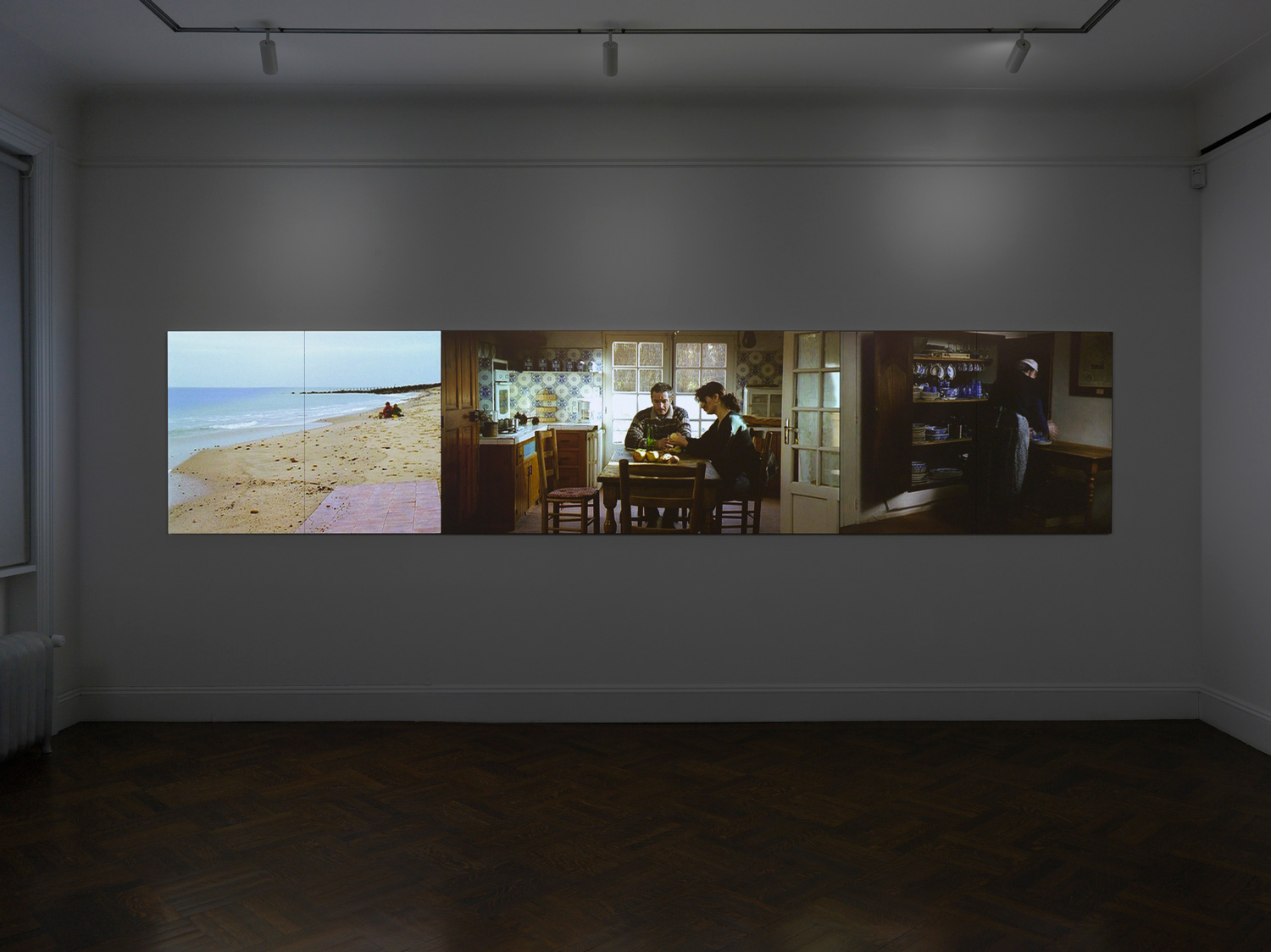
“I’m inspired by painting, and the way people discover things. [The thing about the triptych] is that it’s intimate, but it’s also outside. Sometimes we feel at the same time inside and outside.”

“Here we ask you for 10 minutes, and it’s nothing, but the feeling comes if you give yourself time to feel it. I decided at some point I should imagine, but my mind started to think ‘what could happen?’ ‘What could happen if I love so much ocean, and I could bring that outside?’”
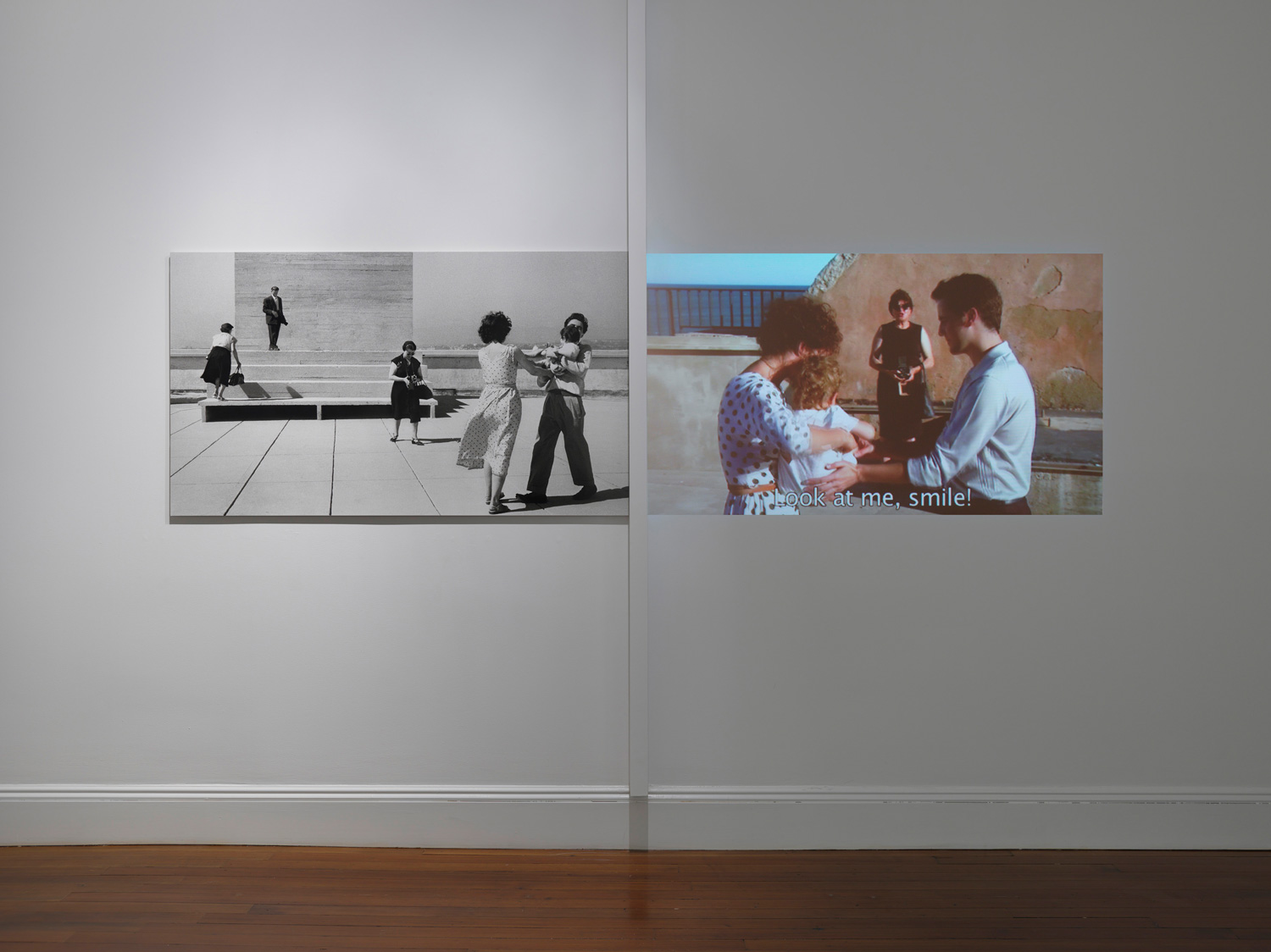
“This is a photo, a snapshot I took. I was sent by a magazine because Le Corbusier, a famous architect, had just recently made a big house that many people in Marseille called ‘La Cite Radieuse’. So they sent me there. Then I liked the mise en scene, because people put themselves there, I didn’t ask them. I shot at the right point where something is happening, a lady is taking a picture of a couple. And for years I was questioning myself. Why did I not ask them at the time who were they? I took the photo and they left, and I left, and I was questioning. And a lot of snapshots, for me, have questions, a mystery. And that I decided to do something through the world that we see. Because it was a mystery, I decided to make a screenplay. Who could be those people? So ordinary people became characters.”
Photos of Agnes Varda by Christelle de Castro. Archival and exhibition images courtesy of the French Institute Alliance Française.
